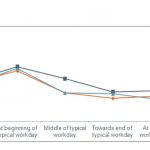Now’s the Time for Environmental Training
The ability of environmental training to deliver benefits rests on the development of a vibrant partnership between the learning and development, environmental, and business sectors.
Removing Obstacles to Achieving Corporate Goals
So the first of the reasons we fail to achieve our corporate goals is that we often attempt to implement them without following the best practices of change management. If a business is to grow and develop, it must consciously evaluate its failed goals against these current best practices.
Give Your Employees Tools to Ditch the Pitch
Pitches don’t hold customers’ attention. They are not persuasive. We have to stop making sales pitches and presentations. Instead, we must create persuasive conversations.
VAAA’s Project Management Fellows Program
The VA Acquisition Academy PM Fellows Program is a selective professional development initiative that leverages a learner-driven model on a blended platform to create holistic learning for aspiring mission-critical project managers (PMs). To date, 21 percent of Fellows received promotions in the first year of participation in the program.
Training Sector Is a Busy M&A Market
The professional training sector has benefitted from a variety of recent favorable trends, leading to an acceleration of mergers and acquisitions activity as larger operators begin to take a more prominent role in a fragmented industry.
Are Your E-Learning Efforts Underperforming?
Four common reasons e-learning programs often fail, each of which can be overcome with a more informed and coordinated learning communications strategy.
Harnessing Energy Microbursts in the Workplace
Some 93 percent of respondents to a survey said they are interested in improving their energy levels throughout their day. A study shows that performing a single microburst of physical activity when feeling tired (i.e., spending five minutes walking up and down stairs, at an easy pace) can triple energy levels.
Motivation Is About Feelings
There is no secret to motivation. It is about the engagement of the human spirit—the ability to capture the aspirations of the individual and provide a vehicle and environment for the fulfillment of those aspirations.
Morrison – TouchPoint’s Supervisor Training Series
Morrison – TouchPoint’s face-to-face Supervisor Training Series: Establishing Your Roots as a Manager program aims to reinforce company vision and culture, equip hourly supervisors with the tools they need to become better leaders in their current positions, and help hourly supervisors grow into higher leadership positions in the organization.
Experience Design and Virtual Teamwork
A successful virtual team experience will be one in which the overall quality of team touch-points bridges distance to help generate valuable working relationships and outstanding results. The overall team experience is one members would be happy to repeat because they found it productive and enjoyable.


